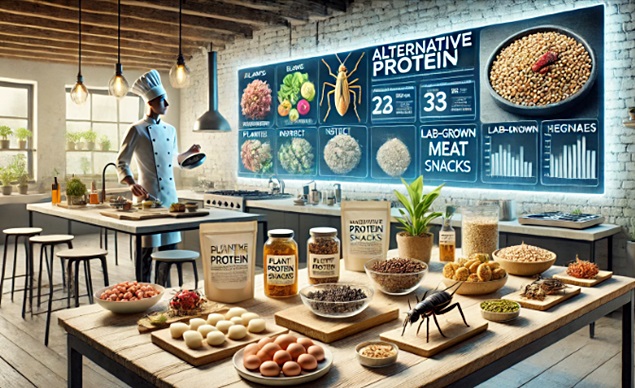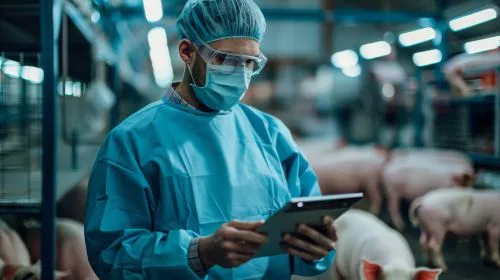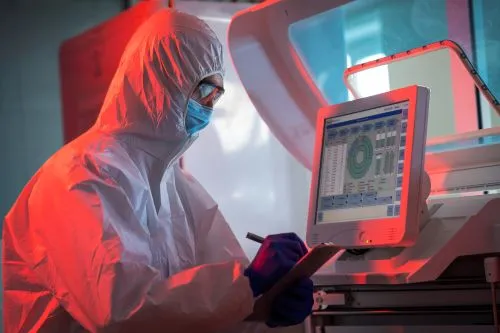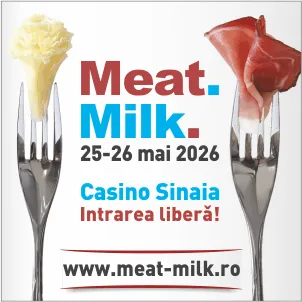1192

Can Food Innovation Save the Planet?
Global food production must increase by 60% over the next 25 years. Europe is leading the way in food innovation, developing solutions to tackle this urgent food security challenge. But is it enough? Euractiv offers a possible answer.
WHO Estimates
The World Health Organization (WHO) estimates that 733 million people suffered from hunger in 2023, exacerbated by significant food losses due to climate change and crop diseases.
By 2050, the world faces the daunting task of feeding a projected population of 10 billion.
Innovations such as genetic modifications to improve crop resilience, advances in sensors and big data for precision agriculture, artificial intelligence (AI), and the science and engineering behind alternative sources of animal and dairy proteins are all necessary to meet food production targets.
The Methane Threat
Reducing meat and dairy consumption has long been recognized as a key strategy for mitigating the impact of our food systems on climate change, biodiversity loss from land use changes, and freshwater use.
Public awareness and understanding of the environmental effects of food choices have also increased over time.
Studies suggest that plant-based diets could spare the lives of more than 80 billion animals per year and cause 75% less environmental damage than meat-based diets. A recent study also found striking health and environmental benefits to replacing meat and dairy with plant-based alternatives.
Agriculture is the largest source of anthropogenic methane—the second most significant climate pollutant after carbon dioxide (CO₂). Methane levels are rising at record pace and have 28 times the global warming potential of CO₂. Much of this methane comes from enteric fermentation in livestock.
Atmospheric methane levels in 2021 were 162% higher than pre-industrial levels.
Producing animal feed requires fertilizers that release CO₂, nitrous oxide, and transport emissions, while converting forests and grasslands for grazing and feed crops contributes further to carbon emissions. Agricultural operations such as animal production and feed preparation also consume energy, and meat processing and packaging add to the sector’s total emissions.
The Rise of Alternative Proteins
Proteins are essential to human health, providing the nine vital amino acids needed for growth, repair, and optimal energy levels. Ensuring an adequate intake of high-quality protein is crucial for maintaining health.
Nearly 70% of protein intake in the United States comes from animal sources, while over two billion people rely on insects for protein, highlighting human adaptability in securing essential nutrients.
Alternative proteins are essential to the future of food.
The European Commission’s Farm to Fork Strategy has identified alternative proteins as key to transitioning toward a sustainable food system. Although many have been available for centuries, their popularity continues to grow.
The five fastest-growing innovations in alternative proteins include lab-grown meat, plant-based proteins, edible insects, and algae.
Protein-Rich Plants
When consumed raw, protein-rich plants have comparable protein content to meat. They also typically offer more fiber and less saturated fat.
Today, advances in processing technology—particularly shear cell extrusion and texturization techniques—have significantly improved the ability of plant-based meat and dairy alternatives (PBMA and PBDA) to mimic animal-derived foods.
Many of the latest PBMA products now closely replicate the texture, taste, and appearance of meat.
Lab-grown meat is perhaps the most challenging option, as it involves producing meat in a laboratory setting. However, recent progress in fields such as tissue engineering, stem cell biology, and bioprocessing has made cultivated meat production viable.
Around 150 companies are currently using one of three technologies: cell culture in bioreactors, 3D bioprinting, or precision fermentation.
Insects are also excellent sources of protein and fat. They contain all essential amino acids for human health and are rich in polyunsaturated fatty acids, vitamins, and minerals. Insect-based food startups range from harvesting insects to producing consumer-ready food products.
Algae have also been recognized as a viable and sustainable protein source with high nutritional value. Their rich protein content makes microalgae widely available in powdered forms such as pills or tablets. Various extraction methods can efficiently isolate algae proteins, making them a useful source of food additives.
Boosting Europe’s Funding
A recent report from the Good Food Institute (GFI) highlighted Europe's increasing investments in alternative protein research and progress in shaping the future of food.
In 2023, investments in alternative protein R&D in Europe reached a record €290 million—a sharp rise from just €63 million in 2020.
This upward trend continued in 2024, supported by initiatives such as the European Innovation Council’s €50 million funding for precision fermentation and algae projects.
Several European nations are investing heavily in alternative protein innovation. Denmark, for instance, has committed €96 million since 2020, focusing on plant-based technologies.
Between 2020 and 2024, Germany allocated €54 million to plant-based, fermentation, and cultivated meat projects, and committed an additional €38 million in its 2024 federal budget.
Plant-based proteins receive the most funding, totaling €390 million since 2020, with efforts aimed at improving taste, texture, and nutritional value. Fermentation-based solutions received €161 million and are projected to surpass plant-based investments by the end of 2024.
Challenges and Considerations
Despite the science behind these innovations and their vast potential, the alternative protein sector still faces several critical challenges.
Even with a growing market, consumer acceptance remains a significant hurdle. Cost and taste are cited as major obstacles to widespread adoption. Additionally, notable technological challenges exist in scaling production to meet commercial demand while maintaining quality and affordability.
Moreover, the true environmental impact of alternative proteins has yet to be thoroughly assessed. There are currently no global guidelines or standards for these proteins, and their regulatory status varies widely between countries.




